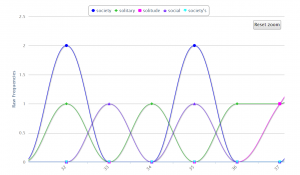#18: Electronic Sources: Audiences and Purposes (Schreibman, Siemens, and Unsworth) provides to us the argument and complications surrounding the purpose and function of electronic texts.
Birkerts and Baker seem to share some of the same anxieties that we have been discussing all semester: the threat of codex extinction. They both “mourn the changes wrought by the development of electronic media, and fear that books, once decoupled from their physical presence, will lose their meaning and historical importance.” While I don’t think we are close to a Fahrenheit 451 post-codex-apocalypse, I understand and share some of their anxious notions. In conversation with procuring electronic texts, however, the rebuttal to this possibility and fear is that electronic texts may actually do the opposite, as this chapter indicates that Birkerts, specifically, “does not consider other possible outcomes, such as one in which general readers and scholars alike have a better sense of the concerns and ideas of peoples and historical periods with increased access to works otherwise available in only a few libraries.” While I agree that the increase of access provides a larger space and opportunity to interact with rare texts, I don’t think that it directly responds to the possible extinction of the codex. Even the authors’ response to this does not clearly answer that: “The development of digital collections does not require the destruction of books; instead, it may provoke more interest in their existence and provide different opportunities for their study through keyword and structured reading.” To me, this doesn’t answer the concern of Birkets and Baker. Even though this process “does not require the destruction of books,” the possibility of the extinction of the codex is not ruled out.
There is also the issue of access. Electronic digitizations of texts simply for access seems to miss the point, according to Hockey, where “access is the least interesting aspect of electronic texts, for it leaves largely unexploited their real power: the ability for texts to be searched and manipulated by computer programs.” For me, and perhaps for the electronic text collections available, Hockey’s stance on what should be the focus of electronic texts seems to be a bit ahead of the game, at this point. It seems that gaining access to a wide range of texts is the fundamental first step toward anything more complex, such as Hockey’s suggestion for electronic text possibilities.
While there is an array of electronic texts available, it is also very limiting: “The initial hindrances to reading works by lesser-known writers, perhaps insurmountable in the past, can be much more easily overcome in this new medium.” While this is true, those texts also need to be made available. Progressing through the chapter, it is clear that finding out what exactly is available is an “immediate problem” since there is no institutionalized cataloging order of what electronic collections are available. It seems to me, that perhaps before dedicating the studies in this field to all that it can be, there needs to be some rational organization of material, increased standards for electronic collections (publisher and edition choices, for example), and an e-Dewey-type system for categorization before the shift to digital humanities can be curbed to anticipate and refute the foundational concerns of skeptics.
